Authors:
ABSTRACT
Aim
The aim of this study was to evaluate the effectiveness of a Pulpotec modified endodontic approach on primary molars
presenting necrotic pulp and furcation bone loss in a cohort of healthy children.
Methods
Forty primary necrotic
molars in healthy children, aged between 4 and 6 years underwent clinical and radiological assessment. A chemomechanical removal of
pulpal necrotic debris was performed with 1 sodium hypochlorite irrigation. The canals were dried and Pulpotec was inserted in
the pulp chamber, and the teeth were then restored. Clinical evaluation, vertical and horizontal measurements of the bone radiolucency
were performed for up to one year after the Pulpotec procedure. Statistical analysis: Wilcoxon signed-rank test was applied for
comparison of groups.
Results
In this study 67.7 of patients showed healing of bone loss, and a significant difference in
height and width of the lesion was observed (respectively 80.6, 71; p < 0.05; p < 0.025).
Conclusion
This
technique can be used as an alternative to conventional endodontic treatment for primary necrotic teeth. This procedure may allow
paedodontists the ability to postpone extraction of necrotic teeth in particular situations or until eruption of the first permanent molar.
Necrotic primary molars presenting furcation bone lesion due to infection may be treated with this modified Pulpotec procedure. With
certain caveats, this procedure will preserve the molar on the dental arch for a certain period of time. In our study this technique yielded
significant clinical improvements, but the radiological improvement is considered moderate. Future investigations are warranted in order
to determine the possible effects of Pulpotec on the succedaneous teeth as well as their path of eruption.
PLUMX METRICS
Publication date:
Keywords:
Issue:
Vol.16 – n.2/2015
Page:
Publisher:
Cite:
Harvard: S. Aboujaoude, B. Noueiri, R. Berbari, A. Khairalla, E. Sfeir (2015) "Evaluation of a modified Pulpotec endodontic approach on necrotic primary molars: a one-year follow-up", European Journal of Paediatric Dentistry, 16(2), pp111-114. doi: https://www.ejpd.eu/wp-content/uploads/pdf/EJPD_2015_2_5.pdf
Copyright (c) 2021 Ariesdue

This work is licensed under a Creative Commons Attribution-NonCommercial 4.0 International License.
